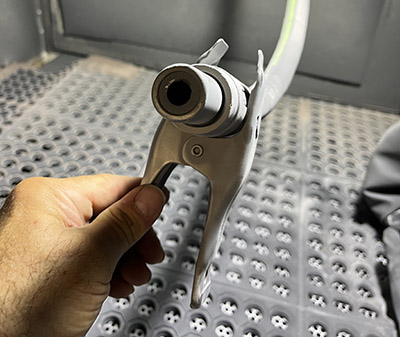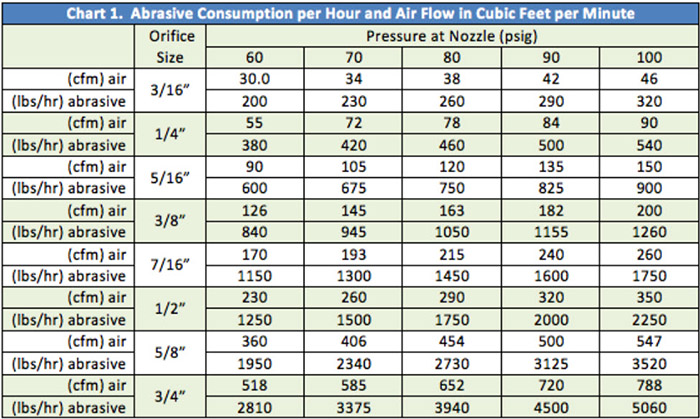By Ron Marshall

A metal parts company had dozens of media blasters installed in its production areas to clean its products for final processing. These blast cabinets were in constant use throughout their 16-hour production day and consumed a significant part of the peak compressed air demands.
The staff found that they were running out of air pressure and called a compressed air auditor to do an assessment of their demand profile. The auditor placed instruments on their system and could see that the air pressure was sagging throughout the day due to a lack of compressor capacity — the compressors could not keep up to the peak demand.
Part of the auditing process in any compressed air study is to look for major end users to determine if these consumers are “appropriate.” An appropriate compressed air user would be some function that could not economically be provided with any other energy source and one that is consuming compressed air as expected.
Part of the study focused on the blast cabinets (Fig. 1), so these were investigated. Blast nozzles wear slightly with each use as the internal diameter gets wider. The larger diameter, the more compressed air is consumed, increasing the overall compressed air demand. For example, allowing a ¼-in. nozzle to wear to one size larger will increase the compressed air consumption from 84 cfm to 135 cfm at 90 psi, a 60% increase (Fig. 2).

Sure enough, measurements of the existing blast nozzles showed that the staff were not maintaining their nozzle diameters; this was part of a cost-cutting measure at the plant. Allowing the nozzles to wear excessively was causing their compressor capacity to be exceeded, pulling down the air pressure, and causing production problems to occur elsewhere. The air compressor operators were considering purchasing an expensive new compressor and dryer to solve the problem at a cost many times more that replacing the blast nozzles.
If you are having air pressure problems, be sure to check whether your end use of compressed air is appropriate!
Filed Under: Components Oil Coolers, Compressed Air Technologies, Pneumatic Tips